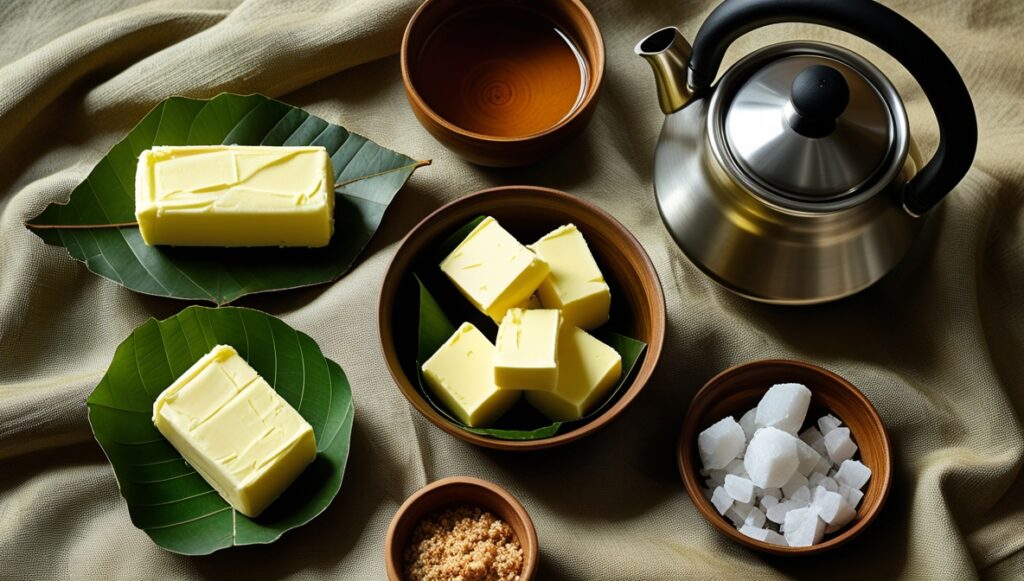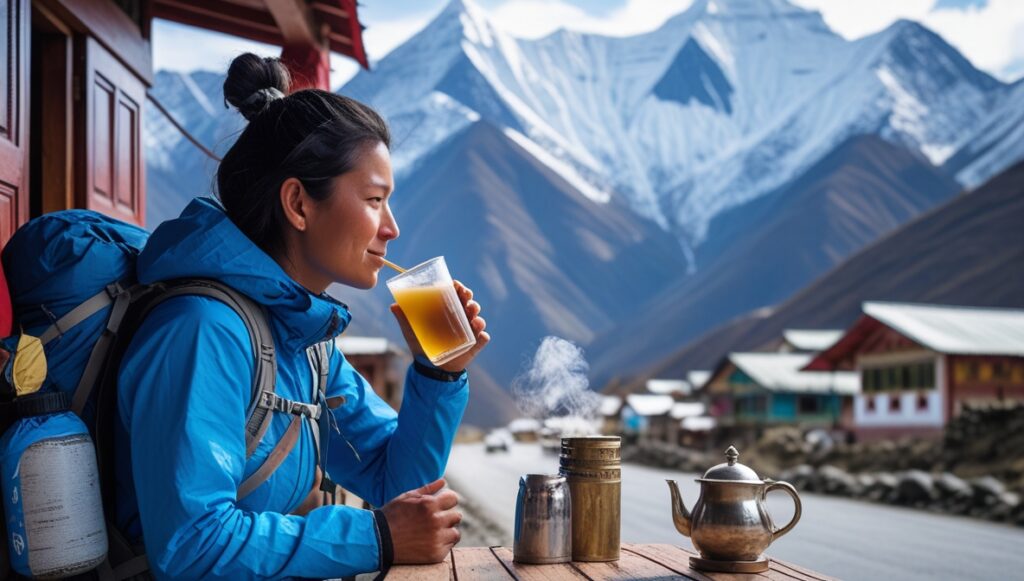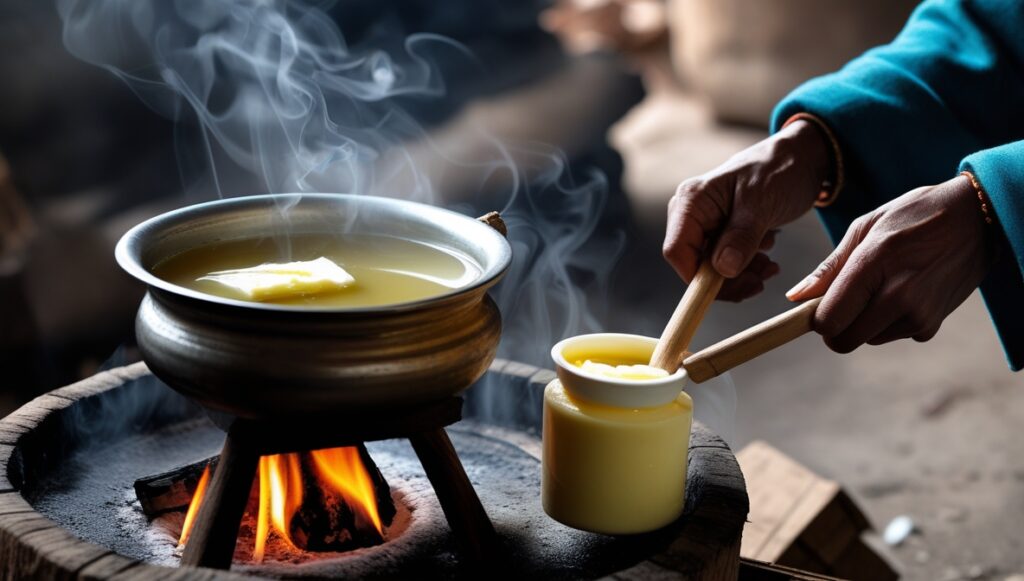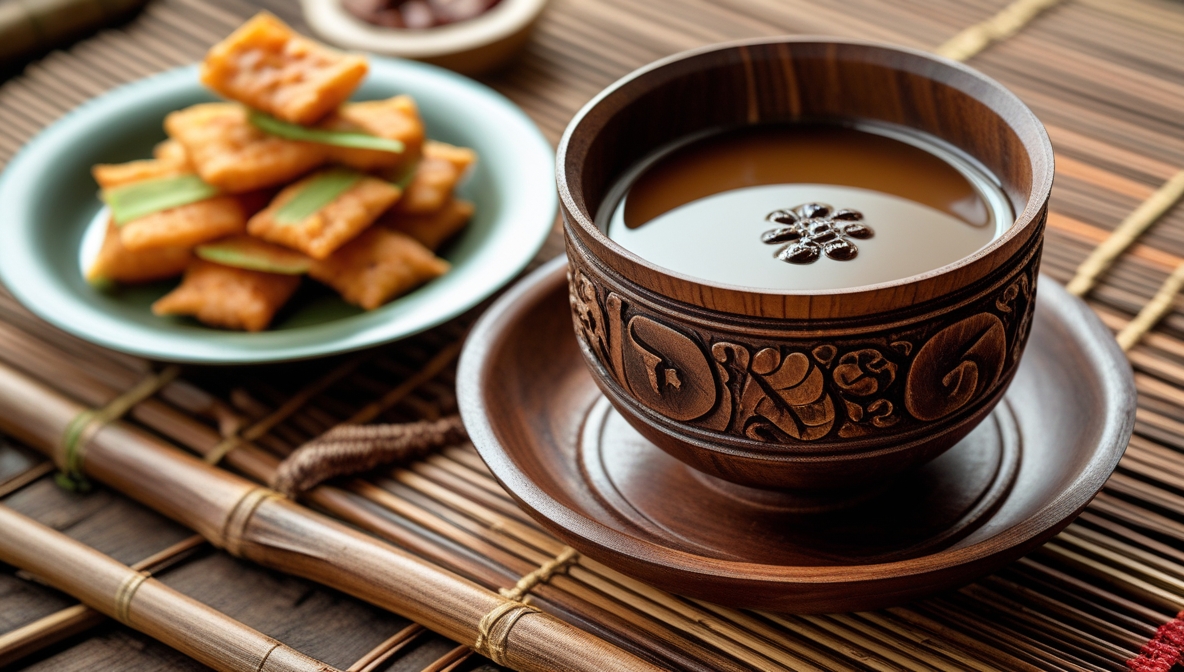Introduction
Suja, often referred to as Bhutanese butter tea, is more than just a beverage — it’s a cherished part of Traditional Bhutan Food culture. This rich, creamy, and slightly salty tea is renowned for its unique flavor and for offering warmth and nourishment in Bhutan’s cold Himalayan climate. Whether enjoyed in homes, monasteries, or local teahouses, it serves as a comforting tradition deeply rooted in daily life.
It’s loved not only for its taste but also for its role as a hearty drink that sustains people during long, chilly days. Unlike conventional teas, this drink provides both hydration and essential calories, making it one of the Famous Foods in Bhutan.


History & Cultural Significance
Suja has ancient origins, drawing influence from Tibetan and Himalayan cultures where butter tea has been a staple for centuries. In Bhutan, it plays a prominent role in both everyday routines and ceremonial traditions. Historically, it was essential for monks, nomads, and farmers surviving in the harsh mountainous terrain.
Culturally, Suja represents hospitality and respect — offering it to guests is a symbol of goodwill. It’s commonly served during festivals and religious rituals, signifying nourishment and purity. It remains a favorite among both royal families and commoners, making it a unifying symbol of national identity.
Ingredients & Regional Variations
The Best Suja Recipe includes simple yet nourishing ingredients:
Black tea leaves (typically strong, loose-leaf)
Yak butter or cow butter
Salt
Water
Milk (optional, for added creaminess)
Variations occur across regions. Some areas prefer yak butter for its robust flavor and richness, while others use cow butter. Families may adjust the saltiness or add milk to customize the taste.
Health-conscious or vegan adaptations are gaining traction, using plant-based butter alternatives while preserving the essence of this Traditional Bhutan Food.
Cooking Process & Difficulty Level

Making this drink is relatively simple, though perfecting its flavor balance may take some practice.
Difficulty Level: Beginner-friendly
Basic Steps:
Boil water and brew the black tea leaves.
Simmer until strong and dark.
Strain into a churn or blender.
Add butter and salt.
Churn or blend until frothy and well-mixed.
Optionally, add milk and churn again.
With practice, you’ll master the creamy, warming taste associated with the Best Suja Recipe.
Where to Eat Suja in Bhutan
Wondering for an authentic experience? Here are some of the best places to Try:
Punakha Dzong Tea Houses – Traditional settings with freshly churned tea.
Thimphu Local Markets – Street vendors offering piping hot cups to locals and visitors.
Bumthang Teahouses – Known for using yak butter and pristine mountain water.
High-end Bhutanese restaurants abroad – Gourmet versions of this classic beverage for global audiences.
These locations provide a deeper appreciation of one of the most Famous Foods in Bhutan.
Pairing with Drinks & Side Dishes
This beverage is often enjoyed solo or with snacks like:
Ema Datshi – Bhutan’s signature chili cheese stew enhances the tea’s smoothness.
Momos or fried rice – The richness of the tea complements these mild-flavored dishes.
Ara (local spirit) – Occasionally paired during celebrations.
Its salty, buttery profile is ideal for balancing spicy or starchy Bhutanese dishes.
Fun Facts & Trivia
Traditionally churned in a wooden device called a dapa for perfect consistency.
Often made using yak butter, prized for its high fat content.
Believed to help balance internal body energy during cold months.
Featured in documentaries highlighting Traditional Bhutan Food culture.
Health Benefits & Nutrition
This tea is a high-calorie drink perfect for Bhutan’s cold weather. Key benefits include:
Healthy fats from butter, especially yak butter.
Antioxidants from strong black tea.
Energy-dense, ideal for those in cold climates or with active lifestyles.
Modern versions offer vegan and low-fat options using plant-based ingredients, maintaining its traditional appeal with a healthier twist.
How to Cook It at Home (Best Suja Recipe)
Ingredients:
2 cups water
2 tsp loose black tea leaves
2 tbsp butter (yak or cow)
1/4 tsp salt
1/2 cup milk (optional)
Method:
Boil water and add tea leaves. Simmer for 5–7 minutes.
Strain into a blender or churn.
Add butter and salt.
Blend/churn for 3–5 minutes until frothy.
Add milk if preferred, and blend again.
Serve hot and enjoy!
Tips:
Use high-quality tea for the best results.
Adjust butter and salt to taste.
Churn well for a smooth, frothy finish.
Global Influence & Fusion Cuisine
This drink has found its way into global fusion cuisine. Himalayan-themed cafes across the world serve versions inspired by the Suja Recipe, and some chefs are experimenting by adding its creamy flavor to desserts or sauces — blending Traditional Bhutan Food with global culinary trends.
Comparison with Similar Dishes
Bhutanese Butter Tea vs. Tibetan Butter Tea
Similar in ingredients but differ slightly in preparation and taste.
Bhutanese Butter Tea vs. Masala Chai (India)
One is salty and creamy, while the other is spiced and sweet.
Bhutanese Butter Tea vs. Western Cream Tea
Western teas use sugar and milk, lacking the butter and salt that define this Bhutanese classic.

